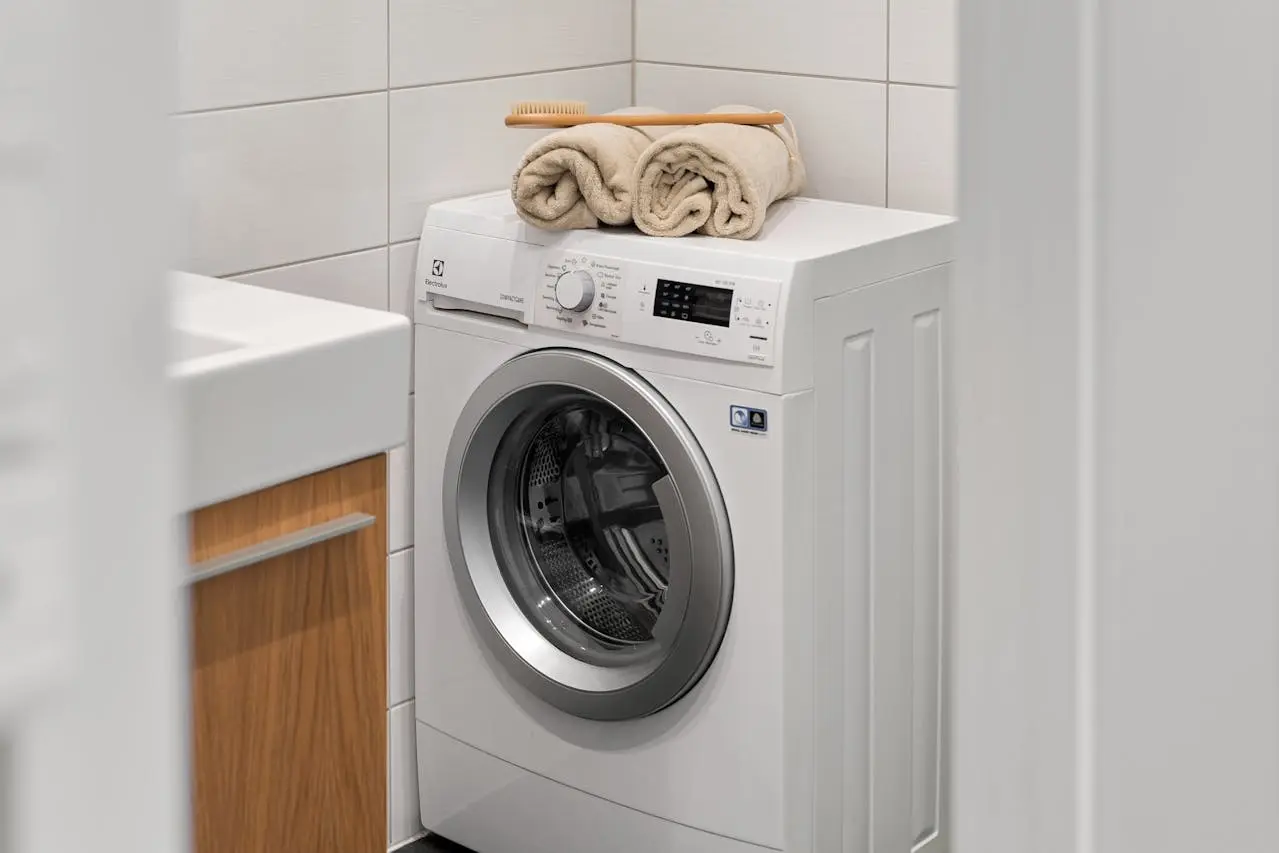
We’ve all been there, staring at a “Dry Clean Only” label like it’s a cryptic warning. I remember the first time I ignored one and threw a silk blouse in the washing machine. Let’s just say it came out looking like it belonged on a teddy bear. That’s when I decided to figure out what dry cleaning actually is and why some clothes demand it.
If you’ve ever wondered why you can’t just wash that expensive suit or delicate dress at home, this guide will break it down in the simplest way possible, no jargon, no fluff, just straight facts with a few personal mishaps sprinkled in.
How Does Dry Cleaning Actually Work? (A Step-by-Step Breakdown)
I used to think dry cleaners had some kind of magical closet where clothes went in dirty and came out spotless. Turns out, it’s a bit more scientific than that. Here’s exactly what happens when you hand over your favourite coat to the professionals.
1. Inspection & Tagging – The “Doctor’s Check-Up” for Clothes
The moment you drop off your clothes, they don’t just get tossed into a machine. First, the dry cleaner examines each item like a detective. Stains, loose threads, missing buttons, they note everything.
Once, I brought in a wool blazer with an ink stain I’d given up on. The cleaner pointed out a tiny tear near the pocket I hadn’t even noticed. They tagged it with a number (so it doesn’t get mixed up) and assured me they’d fix both issues.
2. Pre-Treatment – The Stain Assassin
Not all stains are created equal. Coffee spills, grease marks, or that mysterious yellow tint on shirt collars, they each need different treatment.
The cleaner applies specialised solvents to break down stains before the main wash. I once asked how they deal with red wine spills (after a particularly messy dinner party). They explained that alcohol-based stains need a different solution than oil-based ones.
3. The Cleaning Machine – Where the Magic Happens
Now, the real action begins. Your clothes go into a machine that looks like a giant front-loading washer, but instead of water, it uses chemical solvents.
The most common solvent in the UK is perchloroethylene (perc), but due to environmental concerns, many cleaners now use hydrocarbon-based solvents or liquid CO2.
I visited a dry cleaning facility in Manchester once and saw the machines in action. They’re industrial-sized, with a mechanism that agitates clothes gently (no brutal spinning like your home washer). The solvent dissolves dirt and oils without damaging fabrics.
4. Post-Cleaning Inspection – The Quality Check
After the cycle, your clothes aren’t ready just yet. They’re inspected again. If any stains remain, they’re treated once more.
I learned this the hard way when I rushed to pick up a dress for an event, only to find a faint mark still visible. The cleaner insisted on redoing it properly, no extra charge. That’s when I realised why good dry cleaners have loyal customers.
5. Pressing & Finishing – The VIP Treatment
Ever noticed how dry-cleaned clothes look crisper than home-ironed ones? That’s because professionals use industrial steam presses and specialised equipment.
Suits, for example, are pressed on body-shaped forms to maintain their structure. I once asked why my blazers always come back looking sharper than when I iron them. The answer? They use steam at precise temperatures and tension controls to avoid shine or fabric damage.
6. Packaging – The Grand Finale
Finally, your clothes are wrapped in thin plastic (that satisfying crinkly sound) or hung in garment bags. Some high-end cleaners even add fragrance or anti-static treatments.
Why Do Some Clothes Need Dry Cleaning? (And What Happens If You Don’t)
Not all fabrics are created equal. Some can handle a spin cycle; others will throw a fit if they even see water. Here’s why certain garments demand dry cleaning, and the disasters that happen if you ignore the label.
1. Delicate Fabrics That Hate Water
- Silk – Water can cause permanent wrinkles or colour bleeding. (My shrunken blouse is proof.)
- Wool – Hot water = instant shrinkage. (RIP, my favourite jumper.)
- Cashmere – Loses softness and shape in regular washing.
- Rayon – Can warp or become misshapen.
2. Structured Garments That Lose Their Shape
Ever washed a suit jacket at home? If you have, you now own something resembling a cardboard box.
- Suits & Blazers – Interlinings and padding get distorted.
- Evening Gowns – Beading and embroidery can loosen or tangle.
- Leather & Suede – Water causes stiffness or discolouration.
3. Stains That Won’t Budge in Normal Washes
Some stains laugh at your detergent. Dry cleaning solvents, however, don’t play around.
- Grease/Oil – Dissolves better in chemical solvents than water.
- Ink – Requires special treatment to avoid spreading.
- Wine/Coffee – Can set permanently if washed incorrectly.
4. Colour Preservation
Dark jeans fade. Bright prints dull. Dry cleaning helps maintain vibrancy longer.
Dry Cleaning Myths Debunked (What Most People Get Wrong)
Myth 1: “Dry Cleaning Uses Water Secretly”
Nope. The “dry” means no water is used, just solvents that evaporate cleanly.
Myth 2: “Home Dry-Cleaning Kits Work Just as Well”
They’re better than nothing, but not as thorough. I tried one on a silk scarf, it kind of worked, but not like the pros.
Myth 3: “Dry Cleaning Ruins Clothes Over Time”
Only if done poorly. A reputable cleaner extends garment life.
Myth 4: “All ‘Dry Clean Only’ Labels Are Strict”
Sometimes brands over-cautiously tag items. If in doubt, check fabric care guides.
Eco-Friendly Dry Cleaning: Is It Possible?
Traditional perc isn’t great for the environment. Many UK cleaners now use:
- Liquid CO2 – Non-toxic and recyclable.
- Wet Cleaning – Water-based but controlled to prevent damage.
- Silicone-Based Solvents – Gentler and greener.
Final Thoughts
Dry cleaning isn’t just for the rich or lazy, it’s fabric science. Ignoring those labels can lead to laundry disasters (trust me, I’ve been there). But now that you know how it works, you can make smarter choices about caring for your clothes.
Next time you drop off a suit or dress, you’ll know exactly what’s happening behind the scenes. And if you’ve got a dry cleaning horror story, I’d love to hear it, misery loves company!







